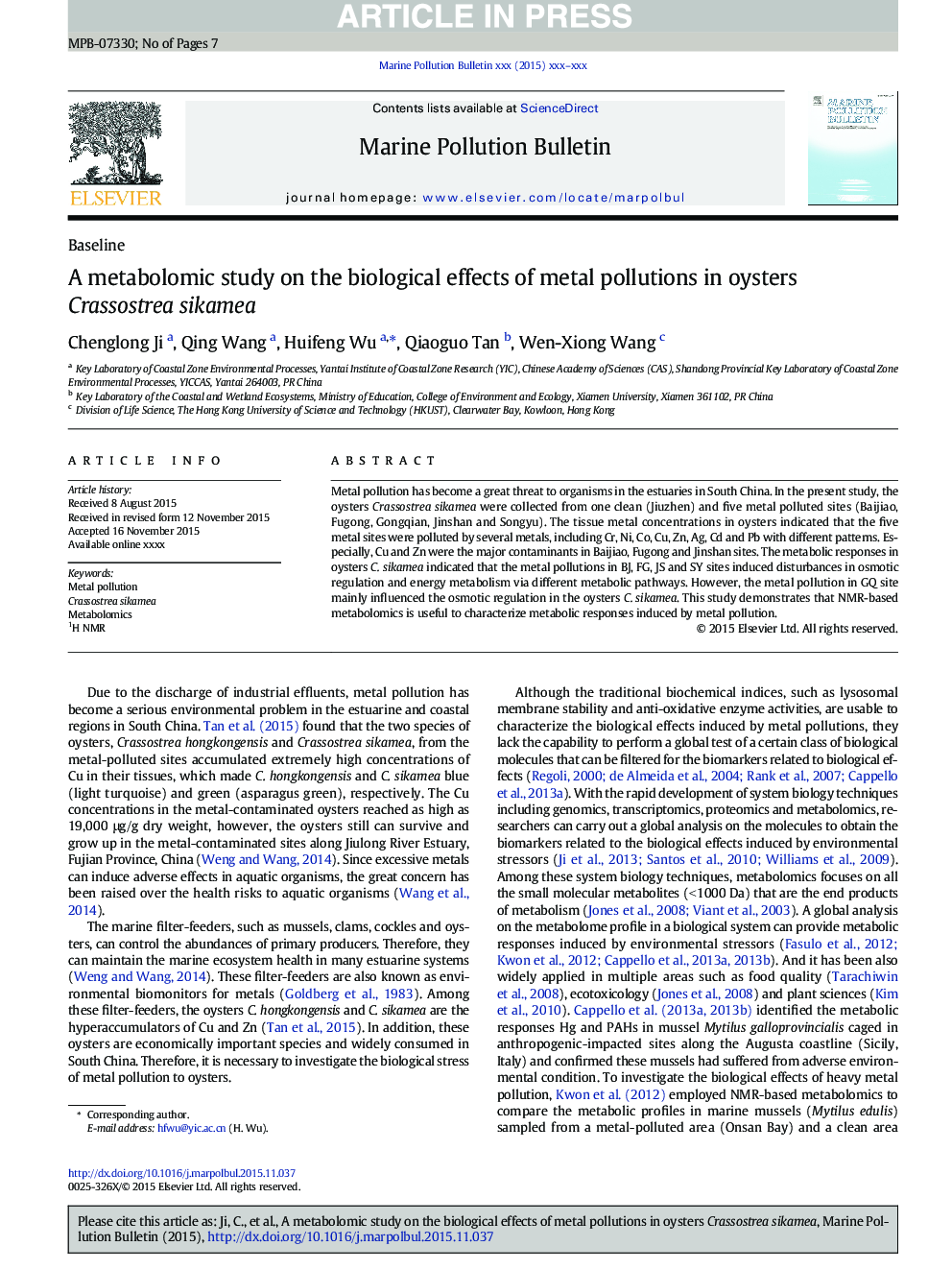| Article ID | Journal | Published Year | Pages | File Type |
|---|---|---|---|---|
| 6356345 | Marine Pollution Bulletin | 2016 | 7 Pages |
Abstract
Metal pollution has become a great threat to organisms in the estuaries in South China. In the present study, the oysters Crassostrea sikamea were collected from one clean (Jiuzhen) and five metal polluted sites (Baijiao, Fugong, Gongqian, Jinshan and Songyu). The tissue metal concentrations in oysters indicated that the five metal sites were polluted by several metals, including Cr, Ni, Co, Cu, Zn, Ag, Cd and Pb with different patterns. Especially, Cu and Zn were the major contaminants in Baijiao, Fugong and Jinshan sites. The metabolic responses in oysters C. sikamea indicated that the metal pollutions in BJ, FG, JS and SY sites induced disturbances in osmotic regulation and energy metabolism via different metabolic pathways. However, the metal pollution in GQ site mainly influenced the osmotic regulation in the oysters C. sikamea. This study demonstrates that NMR-based metabolomics is useful to characterize metabolic responses induced by metal pollution.
Keywords
Related Topics
Physical Sciences and Engineering
Earth and Planetary Sciences
Oceanography
Authors
Chenglong Ji, Qing Wang, Huifeng Wu, Qiaoguo Tan, Wen-Xiong Wang,
